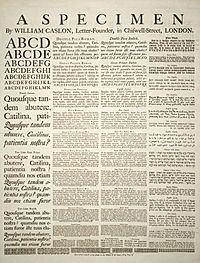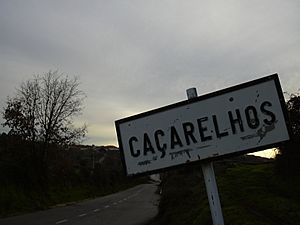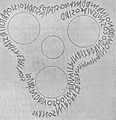Latin alphabet facts for kids
Quick facts for kids LatinRoman |
|
|---|---|
 |
|
| Type | Bicameral impure Alphabet |
| Spoken languages |
|
| Time period | ~700 BC–present |
| ISO 15924 | Latn |
| Note: This page may contain IPA phonetic symbols in Unicode. | |
The Latin or Roman script is a writing system used for many languages today. It is the most popular writing system in the world. Most languages in Western Europe use it as their official script. Some Eastern European languages also use it.
Many languages outside Europe use it too. These include Turkish, Vietnamese, Malay language, Somali, Swahili, and Tagalog. For some languages like Hindi, Urdu, Serbian, and Bosnian, it is an extra way to write.
This alphabet started from a type of the Greek alphabet. The Etruscan people first used it after learning from the Greeks. Later, the Romans made more changes to it. Some letter sounds changed, and new letters were added or removed. Different writing styles also appeared.
Eventually, two main styles joined together. This created the upper case (capital) and lower case (small) letters we use today. Modern capital letters look very similar to the old Roman ones. There are only small differences in how the alphabet is used in different places.
Contents
How the Latin Alphabet Grew
The First Roman Letters
The Latin alphabet used by the ancient Romans had fewer letters than we do now. It was the base for the alphabet we use every day. Over time, new letters were added to fit new sounds.
Here are the letters the Romans used:
| Symbol | A | B | C | D | E | F | G | H | I | K | L | M | N | O | P | Q | R | S | T | V | X | Z |
| Latin name of letter: | ā | bē | kē | dē | ē | ef | gē | hā | ī | kā | el | em | en | ō | pē | qū | er | es | tē | ū | ex | zēta |
The Modern Alphabet
Today's Latin alphabet is used to write many languages around the world. Most Indo-European languages, especially in Western Europe, use it. This includes Germanic languages like English, German, and Swedish. It also includes Romance languages such as French, Spanish, Italian, and Portuguese.
However, not all Indo-European languages use the Latin alphabet. For example, Greek and Russian use different scripts. Also, some non-Indo-European languages, like Vietnamese, do use the Latin alphabet.
Many languages that use the Roman alphabet also use diacritics. These are small symbols placed above or below letters. They help show how a word should be pronounced or if it has a special tone. English is one of the few major European languages that does not use these marks for its own words. Sometimes, English words borrowed from other languages might keep their diacritics.
Here are the basic letters of the modern alphabet:
| Uppercase | A | B | C | D | E | F | G | H | I | J | K | L | M | N | O | P | Q | R | S | T | U | V | W | X | Y | Z |
| Lowercase | a | b | c | d | e | f | g | h | i | j | k | l | m | n | o | p | q | r | s | t | u | v | w | x | y | z |
Different Ways to Use the Script

The Roman script has fewer letters than the number of sounds in some languages. To make up for this, many languages add diacritic marks. These marks change the sound or meaning of a letter. Examples include ă, â, á, é, í, î, ó, ẹ, ị, ọ, ụ, ã, ả, ẻ, ỉ, ỏ, ủ, ñ, č, ď, ě, í, ň, ř, š, ș, ť, ț, ú, ů, ž and đ. Using these marks effectively increases the number of letters in their alphabet.
Languages that use some of these special characters include French, Czech, Polish, Hungarian, Romanian, Spanish, Tagalog, Vietnamese, Esperanto, and Igbo.
Languages Changing to Latin Script
Many countries have changed their writing systems to the Latin script. In some cases, Europeans encouraged or made native people use it. For example, the Vietnamese language was once written using Chinese characters. This old system was called chu nom. The problem was that people had to learn many characters to read and write well.
In the early 20th century, the Vietnamese government switched to the Latin alphabet. This helped more people learn to read and write much faster. Even after Vietnam became independent, they kept using the Latin alphabet because it was so much easier to learn.
After World War I, the Ottoman Empire ended. Kemal Atatürk led Turkey to adopt the Latin alphabet. This change helped modernize the country. When the Soviet Union broke apart, some new countries also started using the Latin alphabet for their languages. These include Turkmenistan, Uzbekistan, and Azerbaijan. In 2018, Kazakhstan also announced that the Latin alphabet would become the main writing system for the Kazakh language.
Romanization for Computers and Travel
Changing a language to be written with Latin letters is called romanization. This is very helpful for people who don't speak the language. A romanized version can give them an idea of how words sound.
Some languages, like Chinese and Japanese, use the Latin alphabet to make typing on computers easier. In mainland China, pinyin is the official way to romanize Mandarin Chinese. People type Chinese characters by typing their sounds using pinyin.
Japanese computers can use special keyboards for kana (Japanese letters). But Japanese can also be typed using the Latin alphabet. A special computer program called IME (input method editor) changes the Latin letters, called romaji in Japanese, into Japanese kana and kanji (Chinese characters used in Japanese).
Images for kids
-
The Duenos inscription from about 600 BC. It shows a very early form of the Old Latin alphabet.
-
This inscription from the first century shows apices (small marks over vowels). The letter I is written taller instead of having an apex. From the shrine of the Augustales at Herculaneum.
-
A Jeton (a type of coin or token) from Nuremberg, made around 1553.
See also
 In Spanish: Alfabeto latino para niños
In Spanish: Alfabeto latino para niños





